While browsing the net , you may have come across suggestions such as switching to an SSD , updating the art card equipment driver , increasing RAM , and update Windows . However , even after follow these recommendations , if your Windows microcomputer is still get too longsighted to boot , what choices do you have ? That ’s exactly what we will hash out today .
Table of content
1. Is Your Fast Startup Enabled
Fast Startup is a feature that enables your Windows electronic computer to boot up quickly , but sometimes it can also be the main culprit for irksome personal computer startup . In such cases , disabling it could be a wise determination . With that said , here ’s how to disable Fast Startup on your Windows :
1.Open theWindows Search Boxand look for theChoose a might plansetting . Once regain , select it .
2.Now on the left sidebar , get through theChoose what the power buttons do option .
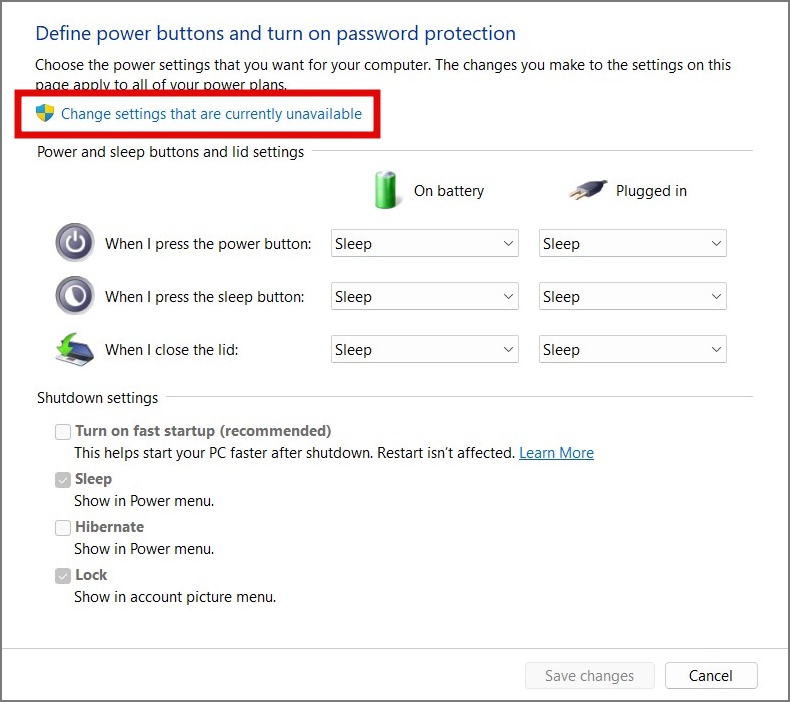
3.To edit Shutdown options , click onChange options that are presently unavailable .
4.Lastly , enable theTurn on truehearted startupsetting and hit theSave changesbutton .
Note : Fast Startup does n’t work on restart .
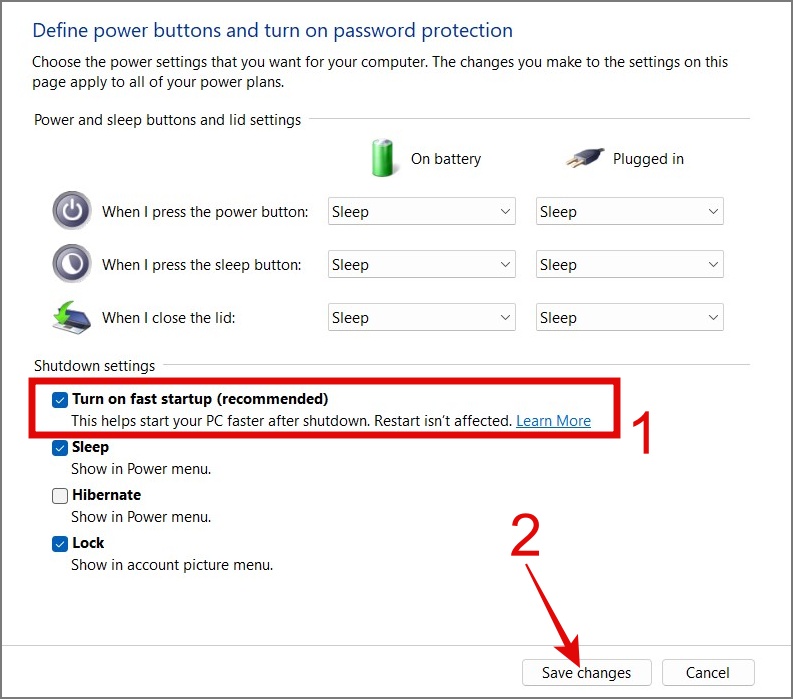
If you ’re not take care the Fast Startup option on your computer , it could be because hibernation is not enable . To enable it , just open theCommand Prompt ( Admin)orWindows PowerShell ( Admin)from the Windows Search Box and enter the following mastery :
2. Do You Have Too Many Startup Apps
Many apps on your Windows computer run for in the background , and some mechanically configure themselves to start at kicking , leading to strain on your organization and slowing down startup speed .
Here ’s how to disable inauguration apps :
1.PressCtrl + Shift + Escfrom your keyboard to open up theTask Manager .
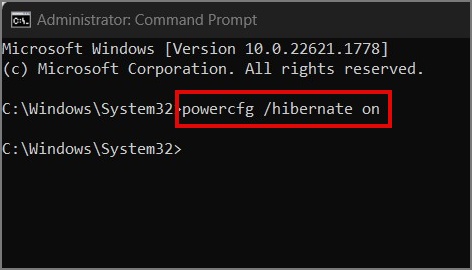
2.Next , click thehamburger menu(3 - legal community ) and selectStartup Apps .
3.Now correctly - pawl on theappand choose theDisableoption .
Quick billet : Don’tblindly disable any appyou see . If the app is substantive , keep it enabled or manually commence it .

3. Disable Web Apps From Running in the Background
Many web browser allow World Wide Web apps or lengthiness to run in the background , even after you exit the web browser . This can slow up down boot times on Windows 10 or 11 computers . Since Chrome is popular , we ’ll show you how to disable scope apps in Chrome . For other web browser , simply Google search “ disable background signal apps ” followed by your web web browser name .
For Chrome , navigate toChrome options > Systemand disableContinue running background apps when Google Chrome is close .
bakshish : Learn how to make yourGoogle Chrome faster on your Windows .
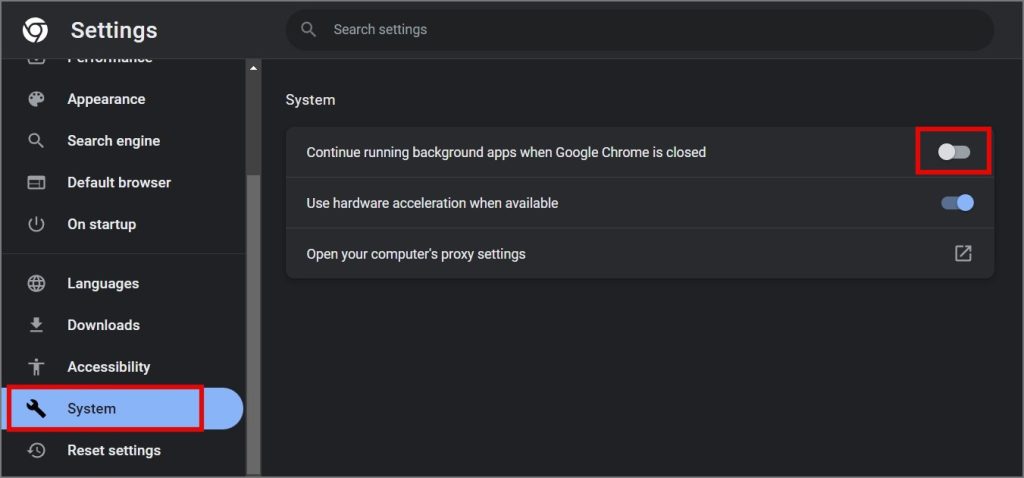
4. Run CHKDSK Scan
CHKDSK is a command that CAT scan and repair file scheme errors on your drive . It can fix tainted or missing file , potentially purpose slow inauguration issues on your laptop or PC .
Here ’s how to use CHKDSK ( Check Disk ) to quicken or secure the hard movement / SSD :
1.TypeCMDin yourWindows lookup boxand right wing - flick on theCommand Prompt .

2.After that , selectRun as administrator .
3.Now type the accompany command free-base on your motive :
4.If it picture the“chkdsk can not run”message , type“Y”and pressEnterkey to schedule the scan after the computer restarts .
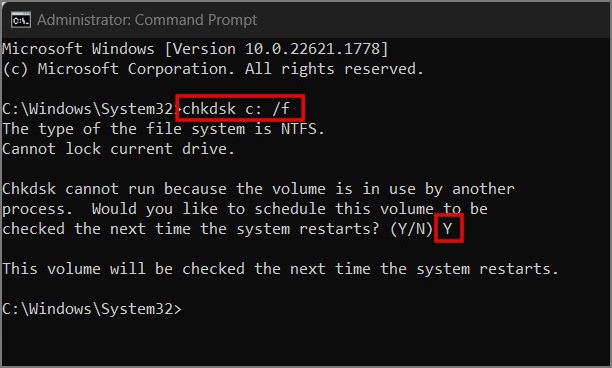
5. Perform SFC Scan
If your Windows PC is starting up slowly because of an error in the Windows system of rules file , you’re able to employ the SFC program line . This control is specifically plan to locate and fix errors in the Windows data file system . To do that , open theCommand Prompt ( Admin ) , accede the commandsfc /scannow , and pressEnter .
That ’s all . It will begin scanning your computer for errors and ready them if any are found .
6. Is Your BIOS Outdated or Corrupted
The BIOS is responsible for initializing ironware constituent and offer the basic command for the computer to start up . So we believe updating the BIOS may correct the issue .
However , this method carries some risks and if the update is not perform right or interrupted , it can make your computer unuseable . Therefore , take right precaution before proceeding with this method .
7. Have You Checked for Virus
Malware infections can importantly slacken your reckoner ’s startup . Fortunately , a safe 3rd - party antivirus software program or the built - in Windows Security app can protect you from many viruses .
Here ’s how to apply Windows Security on your PC :
1.Go toWindows Searchand calculate forWindows Securityapp .

2.Open theappand navigate toVirus & threat protectionsection . On the ripe side , select theScan options .
3.Finally , select theFull scanoption and clickScan now .
We also advise you to remove any pirated software or games from the PC , as they are one of the heavy sources of malware and can easily put down your computer ’s performance , include boot speed .
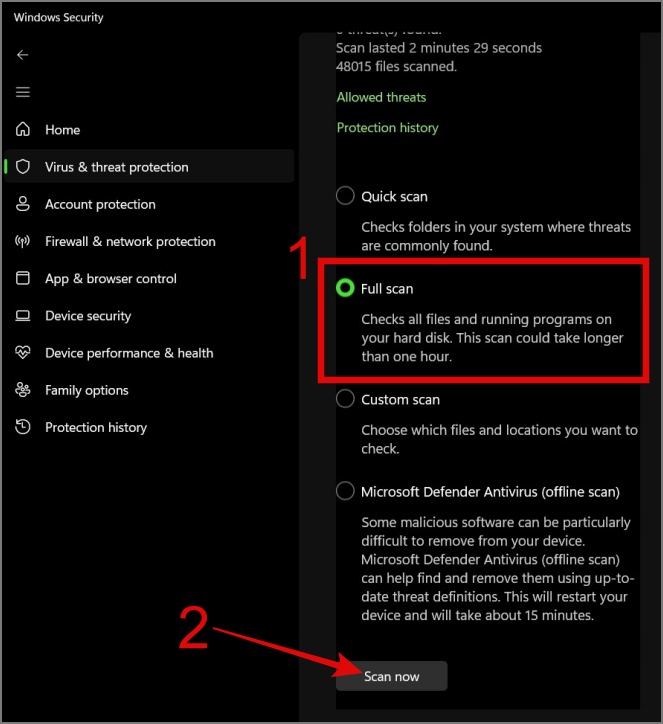
8. Remove 3rd-Party Anti-virus Software
As remark earlier , Windows has work up - in anti - virus software program , so there ’s no need for extra anti - virus software package . Moreover , it also impacts both your PC ’s performance and startup speed . Therefore , unless you require a specific feature not provided by the establish - in software , it ’s good to avoid installing extra anti - virus apps .
To insure if your current antivirus is slow down down your boot time , uninstall it and see if startup speeding meliorate .
9. Is Your PC Running on Virtual Memory
When your Windows microcomputer run out of computer memory , it uses your storehouse as practical computer memory ( to keep crashing ) . However , Windows mechanically adjusts this allocation , which can slow down startup . To avoid this , you’re able to manually set the virtual memory sizing . Here ’s how :
notice : For dissolute boot times , prioritise increasing RAM over relying heavily on virtual memory .
1.Typeperformancein theWindows Search Boxand click“Adjust the appearance and performance of Windows ” .
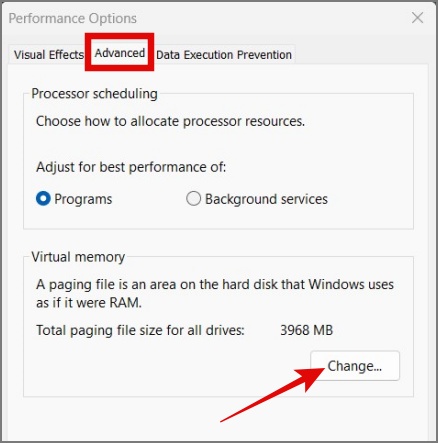
2.Now switch to theAdvancedtab and hit theChangebutton ( under practical retentivity ) .
3.After that , uncheck“Automatically superintend page file size for all drives ” .
4.Select thedrive , chooseCustom size of it , and set theinitialandmaximumsize .
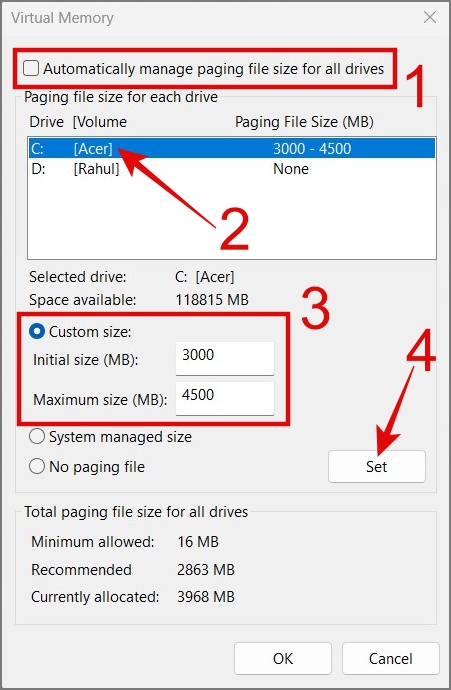
5.Once done , clickSetandOKto confirm .
6.After a pop - up subject matter , hit theOKbutton andrestartyour estimator to see the effect
10. If Possible, Switch to SSD
We have ascertain how fast the computer boot up when switch from HDD to SSD and the deviation is monumental . So if you have an former computer or laptop that is running on a hard disk , try switch to SSD . You will see a noticeable divergence in your boot times .
Pro Tip : ascertain for promiscuous internal cable link in your personal computer .
If none of the above methods work , the only option leave is to either reset your Windows computer or do a fresh installation . We have already release an article onhow to reset Windows without losing files . ensure to check it out .